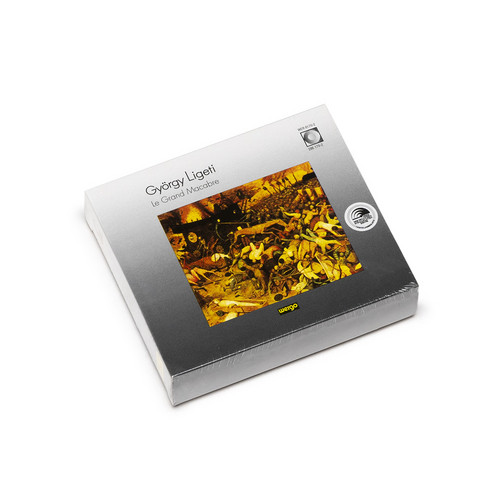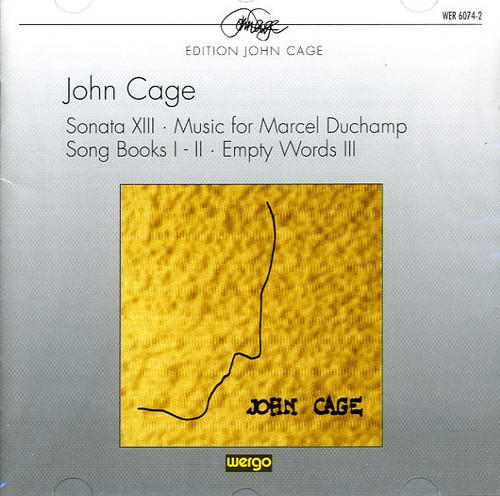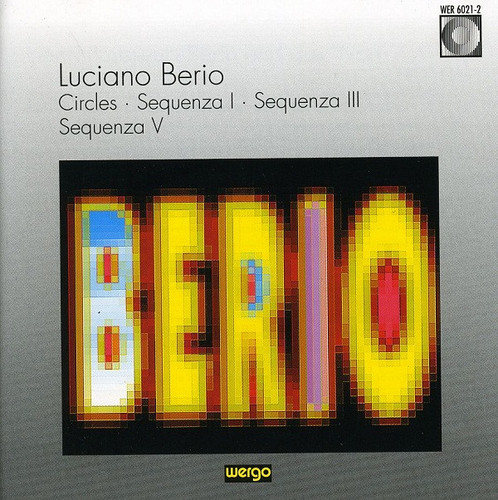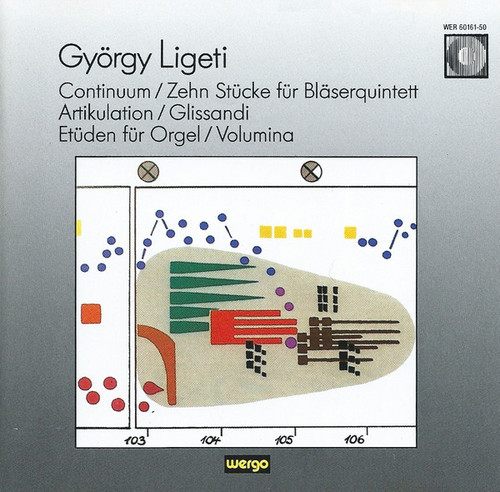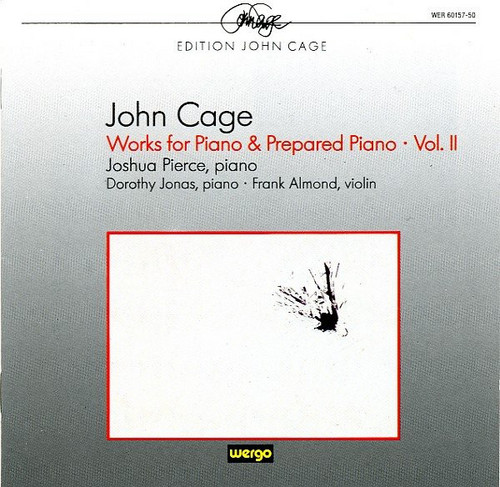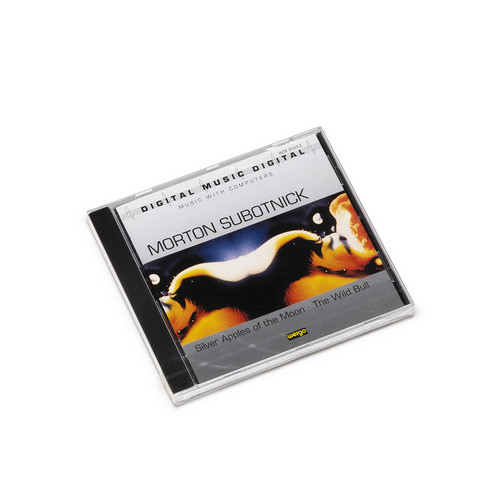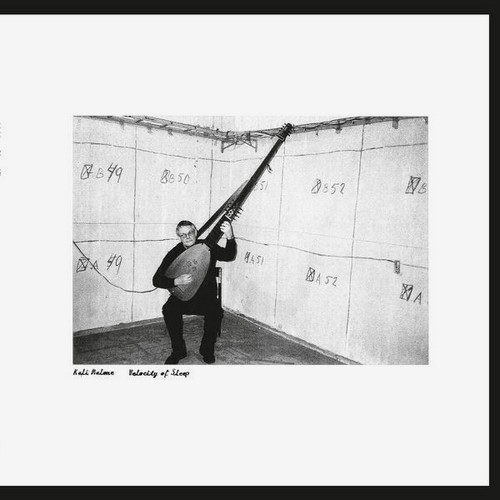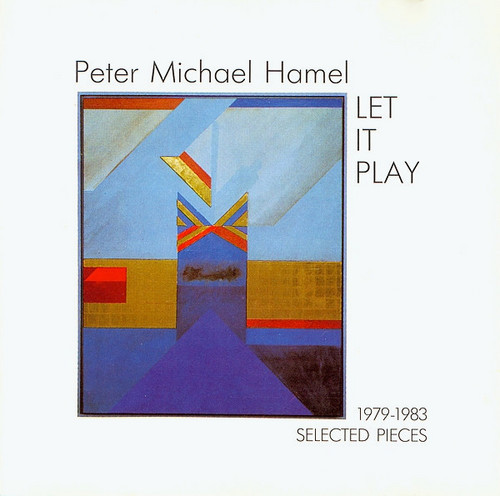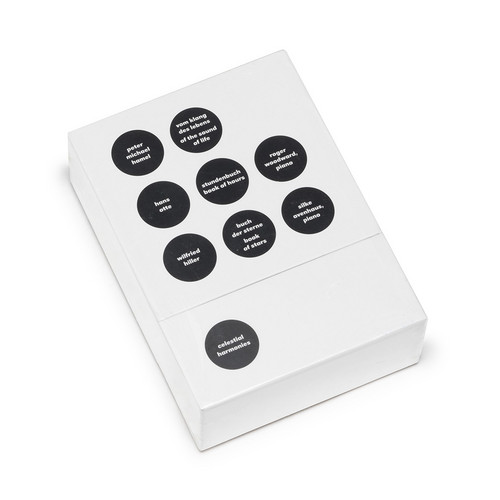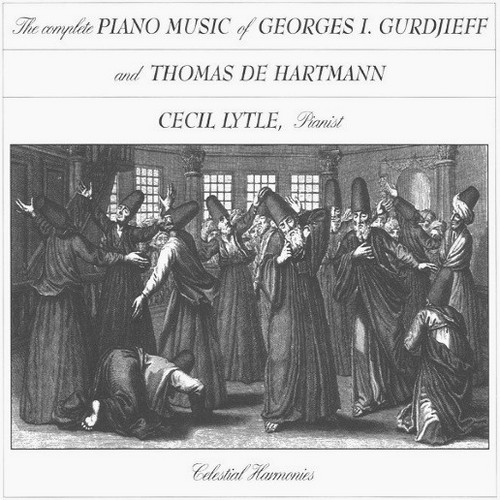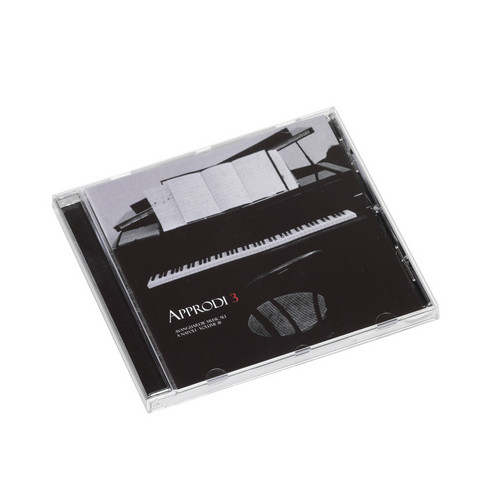For Franz Kline · For Frank O'Hara · De Kooning · Piano Piece To Philip Guston
*2022 stock* Wergo presents Moton Feldman's compositions For Franz Kline · For Frank O'Hara · De Kooning · Piano Piece To Philip Guston. Performed by Ensemble Avantgarde.
Le Grand Macabre
György Ligeti’s polymorphous music, a product of the 1960s, promises no familiar idiom even today. Ligeti himself described the bizarre and exaggerated music of Le Grand Macabre to be “far removed from the territory of Wagner, Strauss and Berg.”A sense of the absurd, the unpredictable, the totally irrational, not unlike the Dadaists who made their debut in Zurich back in 1916. Le Grand Macabre is often cited as a quintessential work of a Neo-Dada genre, one as bombastic as it is exuberant.
Sonata XIII / Music For Marcel Duchamp / Song Books I-II / Empty Words III
*2022 stock* The first works of Cage are experimental and related to the future. "The Future of Music" - a Credo" is the title of his first manifesto, and this future bears the name "all-sound music".
Works For Piano, Toy Piano & Prepared Piano · Vol. III
*2022 stock* It may come as a surprise but one of the leading creators of keyboard music in the twentieth century is a composer by the name of John Cage. Cage’s reputation is so deeply associated with the avantgarde, with chance music, graphic notation, performance art, technology and Zen Buddhism that is early, conventionally-notated music for percussion ensemble and keyboards is sometimes neglected. Or was until recently. In the last few years – with the advent of performances and recordings l…
Circles · Sequenza I · Sequenza III · Sequenza V
Wergo presents Luciano Berio's compositions Circles · Sequenza I · Sequenza III · Sequenza V.
Kammerkonzert / Ramifications / Lux Aeterna / Atmosphères
*2022 stock* These pieces (mostly recorded within a couple years of Ligeti writing them) are superb in that unsettling way of most of Ligeti's music. The "Kammerkonzert" is amazing - one of the best things I've heard of his. It's great to hear the harpsichord and Hammond organ in this context and unique in modern music. The uniqueness is really just Ligeti's style and the instruments don't matter so much, whether it's the giant orchestra used for "Atmospheres" or the choral effects in the most f…
Continuum / Zehn Stücke Für Bläserquintett / Artikulation / Glissandi / Etüden Für Orgel / Volumina
*2022 stock* This CD of works by the Hungarian composer György Ligeti represents an extremely interesting combination of several of his serene works for harpsichord, organ, and wind quintet with two electronic compositions from the late 1950s.
Works For Piano & Prepared Piano · Vol. II (1944-1958)
*2022 stock* This recording deals with works composed between 1944 and 1958, including several of Cage's lovely and masterful prepared piano pieces, which will come as a major surprise to those familiar only with his chance compositions. Joshua Pierce is the principal pianist (assisted by Dorothy Jonas on the Three Dances, written for two pianos) and attacks the pieces with a nice balance of delicacy and aggression, although compared to the earlier Angel recording of the abovementioned Three Dan…
Sonatas & Interludes For Prepared Piano
*2022 stock* Sonatas and Interludes for Prepared Piano, a cycle of 20 short pieces for prepared piano (a piano modified by inserting nuts and bolts and other objects between the piano strings in order to produce percussive and otherworldly sound effects) by American composer John Cage. Created in 1946–48 after the composer had been introduced to Indian visual and performing arts, the cycle was intended to represent the so-called permanent emotions—the heroic, the erotic, the wondrous, the comic,…
Music Of Changes
*2022 stock* It's over 70 years since John Cage wrote his pivotal Music of Changes, and it's beginning to show its age. It feels very much of its time, with its uncompromising adherence to the 64 hexagrams of I-Ching, the Chinese book of changes, determining the direction of the piece and its use of sudden, percussive attacks on the strings or the body of the instrument. But for all that there is no denying the extreme stamina and concentration required of the performer, and here Herbert Henck e…
Four Organs / Phase Patterns / Pendulum Music
Three early compositions (1968-1970) by Steve Reich, one of the most prolific exponents of minimal music, in stunning interpretations by the critically acclaimed Ensemble Avantgarde. Available on vinyl (180gr, gatefold sleeve incl. download code) for the first time ever!
Silver Apples of the Moon / The Wild Bull
Silver Apples of the Moon' is without a doubt the best known work from influential composer and electronic music pioneer Morton Subotnick. It was originally commissioned by Nonesuch records back in 1967, when electronic music was more of a series of ideas than a recognised art form, and since then it has achieved well deserved classic status, influencing so much that would come after it is impossible to conceive. Subotnick's instrument of choice was the Buchla modular synthesizer, a gigantic pat…
Velocity of Sleep (LP)
A somnambulant modern masterwork, Kali Malone’s 2017 debut full length album is made available again on vinyl some four years since its limited private press of just 100 copies.
Avalanche
*In process of stocking* In nineteen movements of varying lengths and moods, Denis Doufour’s monumental piano piece “Avalanche” invites us on a voyage across the infinite variation of the forms taken by snow, and the rich vocabulary established by the Innuits for it since their arrival on Greenland, the continent of ice. At work in this piece is a transposition, inspired by morphologies, of a certain kind of energy onto the relationships between the physical and musical realms. Thanks to his prac…
Let It Play (1979-1983 Selected Pieces)
*2022 stock.* This fine introduction to Hamel's varied style presents him in various moods from 1979 to 1983. Samples are taken from Transition, Colours of Time, Bardo, and a few previously unreleased selections.
Vom Klang Des Lebens / Of The Sound Of Life, Stundenbuch / Book Of Hours, Buch Der Sterne / Book Of Stars (Edition Of Contemporary German Piano Music)
Vom Klang Des Lebens/ Of The Sound Of Life features pianist Roger Woodward on a Steinway model D, playing Peter Michael Hamel's cycle of works composed for and dedicated to his wife and new son. The producer/engineer for the recording sessions in January 2006 was Ulrich Kraus.
Long before he discerns the light of the world, still in the womb, nascent man begins to sense the sounds of life. Long before his spirit attempts to differentiate experiences, develop ideas or make his mark on the path of…
The Complete Piano Music Of Georges I. Gurdjieff And Thomas De Hartmann
The music produced from the remarkable collaboration of Georges Ivanovich Gurdjieff and Thomas de Hartmann typifies the creative explorations undertaken by many artists just after the turn of the 20th century. In visual art, Wassily Kandinsky (1866-1944) explored abstraction in both sight and sound, while composer Alexandre Skryabin (1872-1915) proposed an æsthetic format through his compositions that entailed the collaboration of colors, sounds, scents and movement. Each of these artists and th…
Spiralis Aurea
Venturing into untapped realms of creative exploration, the Genoa born, Bologna based, guitarist and electroacoustic composer, Stefano Pilia, returns to Die Schachtel with “Spiralis Aurea”, a double LP of material that intertwines traces of sacred geometry, collective experience and elusive connections between nature and human kind.
Approdi 3, Avanguardie Musicali a Napoli - Volume III
**300 copies** Konsequenz has released a new anthology that offers another incredible window into the Napoli’s remarkable experimental endeavours, another essential artifact for any fan of Italian border and avant-garde musics.
Avant-garde and experimental musics are intrinsically connected to community, collectivism, support, and collaboration. Audiences and artists, stretching to every corner of the globe, continuously rely on each other to push into ever more ambitious realms. This spirit of …
Works for Cello and Piano
With their 2018–2019 Isang Yun Recording Project, ItalianCellist Luigi Piovano and Pianist Aldo Orvieto pay homageto the late Korean composer and the tragic course of his life. “The events that marked Isang Yun’s life emblematically show the miserable short-sightedness of the human being, unable to act authentically and with love towards others, in striving for a common good and reach a common spiritual elevation. When confronted with the exceptional musical depth and the dramatic power of Isang…

